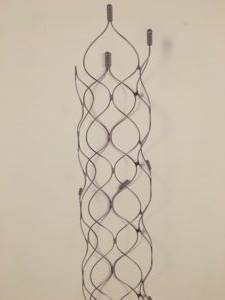About a Thrombectomy
A stroke is a life-threatening and potentially debilitating event, particularly an ischemic stroke. But medical advancements mean doctors are better able to treat major strokes now than ever before. One such advancement is thrombectomy, a surgical procedure often used in conjunction with drug therapy to improve outcomes for those who suffer a severe stroke.
During an ischemic stroke, the blood supply to part of the brain is lost. This is due to an artery blockage. The blockage is usually a blood clot, although it may be made up other material. Traditional drug therapy aims to clear the artery and restore blood flow after the stroke event. Drug therapy is effective in the case of small blood clots but is often insufficient for large clots.
Goal of a Thrombectomy
During a thrombectomy, surgeons use a mechanical device to break up or remove the blood clot at the source. The goal is to restore normal blood flow to the brain. Thrombectomy, when performed within hours of the onset of a severe stroke, can vastly improve patient outcomes in terms of mobility and overall quality of life. Studies cited by the AHA found more patients were living normally three months after the thrombectomy than those who received drug therapy alone.
Thrombectomy is a treatment option that gives neurosurgeons another tool to help improve patient health, particularly in those experiencing a large stroke. The technique has become more widely used in the United States. Approximately 10 to 15 percent of stroke patients are candidates for thrombectomy, and approximately 4.7 percent of patients underwent the treatment in 2015, up from 1.5 percent in 2009, according to a University of California, San Francisco study cited in Neurology Review.
How a Thrombectomy Is Performed
In order to break up or remove the blood clot, your surgeon will navigate a stent or other device through your arteries. A stent is a small meshed tube. First, your care team will insert a catheter in a large artery near your groin. Then, using advanced imaging for guidance, your surgeon will move the catheter through your body to the clot. Once the catheter is in place in your brain, a soft stick with a stent at the end is passed through the catheter and into the blood clot. The stent encases and captures the clot. Once the clot is fully engaged onto the stent, the stick with the stent are pulled back and removed from the artery, taking the clot along with it.

Stent for Thrombectomy
Recovery Timeline For a Thrombectomy
Your recovery from thrombectomy will depend on your own individual health and prognosis. You will remain in the hospital for monitoring in the hours following the procedure. You will receive guidance from your care team on how to prevent future strokes and how to care for your own health. It is likely you will be prescribed medications to help restore your well-being after the procedure and to assist in long-term improvement of your health.
Why Choose Neurosurgeons of New Jersey?
Ischemic strokes must be treated quickly in order to preserve and restore optimal brain function. If you or a loved one is a candidate for a thrombectomy, it is vital that the treatment be performed using appropriate technology and by a qualified medical team. If you or someone else experience stroke symptoms, do not hesitate and and call 9-1-1 as fast as possible.
Once you seek treatment, you should rest assured that your care team is on the cutting edge of advanced medical technology and committed to patient-centered care. Neurosurgeons of New Jersey has a long and respected tradition of providing extraordinary surgical care while remaining compassionate and responsive to our patients and their individual needs.
With a highly qualified group of doctors and medical staff associated with the country’s top hospitals, we have the knowledge and experience to provide extraordinary care. Neurosurgeons of New Jersey is affiliated with the Neurological Institute of New York, the first organization dedicated solely to neurological medical issues.
